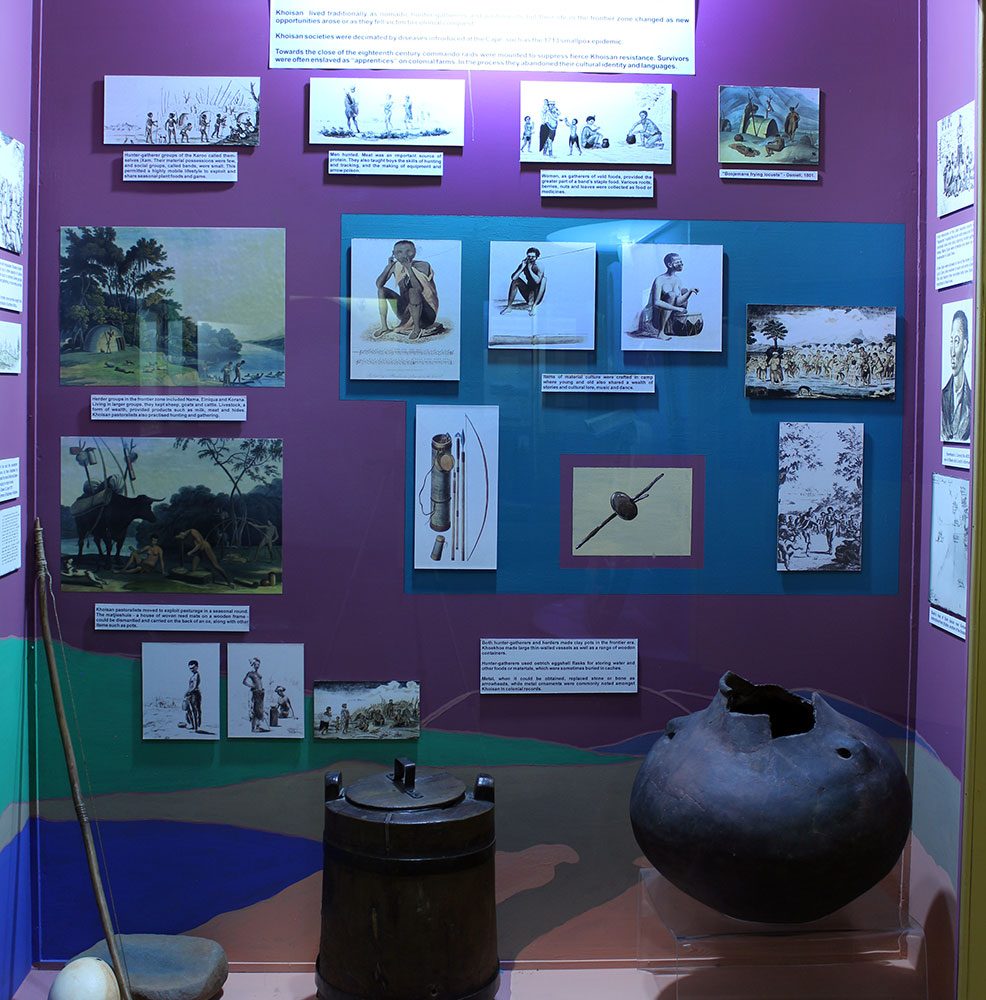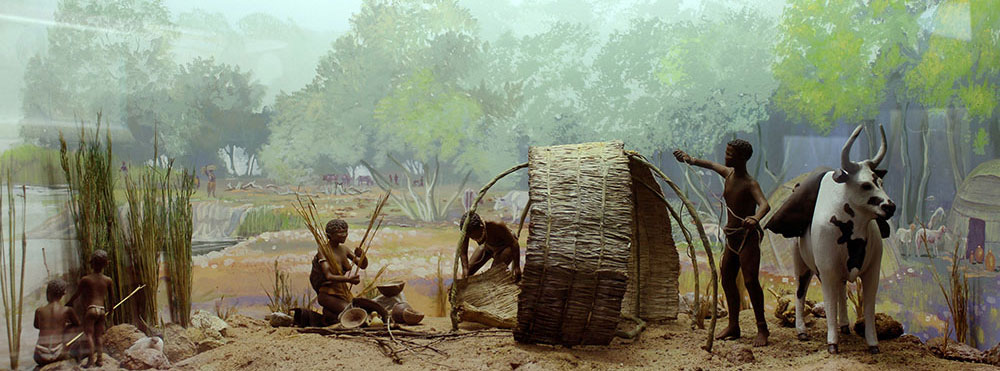Khoisan
- Khoisan
- https://museumsnc.co.za/new_site/wp-content/uploads/2021/04/khoisan-thumb.jpg
- ALL CATEGORIES
- https://museumsnc.co.za/new_site/wp-content/uploads/2021/04/Khoisan-Voiceover.mp3
The Khoisan comprised indigenous San hunter-gatherers (including the |Xam in theKaroo) and Khoikhoi herders (of the latter, those living along the lower Orange River were known as the Nama; the !Kora or Korana lived further upstream).
In the eighteenth and nineteenth centuries Khoisan in the frontier zone were devastated by conflict and disease. Furthermore, food resources of the hunter-gatherers became scarce when Trekboers and “Bastards” invaded the Karoo with sheep and firearms for hunting. As colonists took over land, starving hunter-gatherers began hunting the sheep instead. Many of them were arrested and taken as convicts to build the breakwater in Cape Town. In the 1870s, ||Kabbo spoke of his, and his ancestors’ attachment to places in the Karoo, by then inhabited by others. As he said, “strangers were those who walked at the place. Their place it is not; for ||Kabbo’s father’s father’s place it was.” ||Kabbo had been arrested for stock theft and taken to Cape Town. He spoke of his longing to return home.
Survivors were either absorbed into colonial society as slaves or workers, while others moved north towards the Orange River. Here they mingled with other communities and formed distinctive groups, exploiting the trading and raiding opportunities of the frontier. The Oorlam were a group of mixed Khoisan and escaped slaves who moved north across the Orange River. Their name, meaning “wise guys”, was from the Malay language of the slaves. The group of Oorlam led by Jager Afrikaner, called themselves “Afrikaners.”


